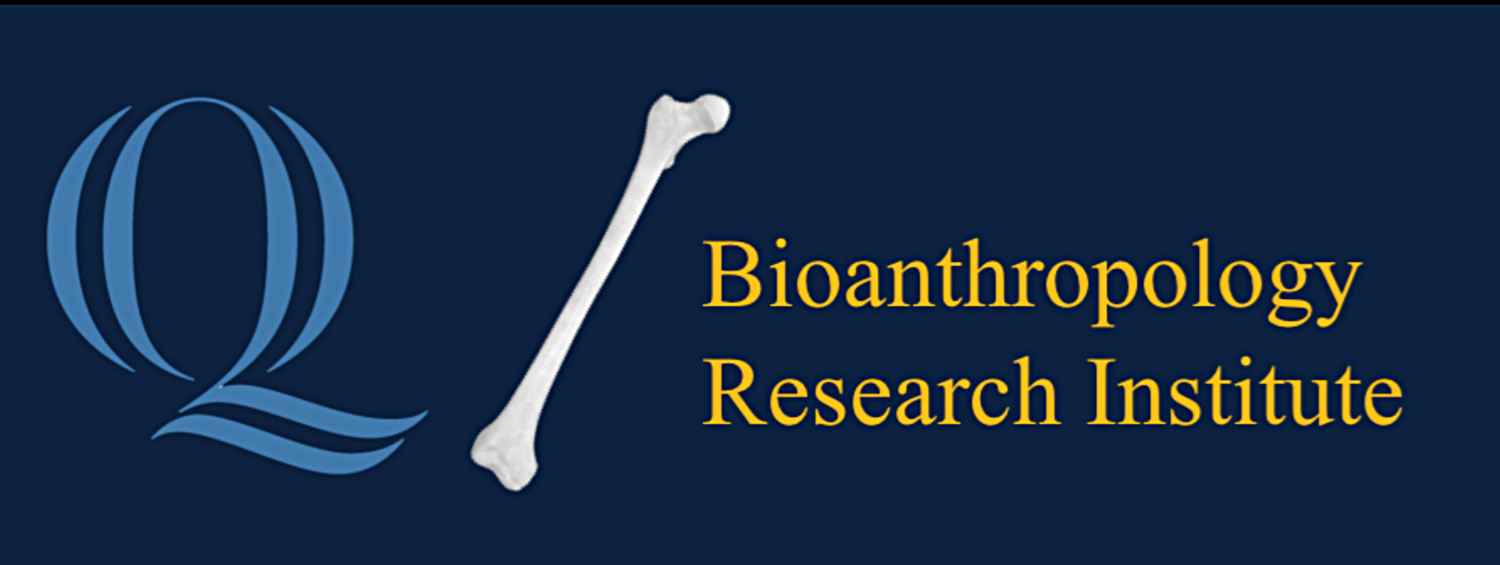Quinnipiac faculty, staff, and students use diagnostic imaging techniques to learn more about Fortune. From left to right: Milad Ziyadeh '14, Natalie Pelletier, Jamie Ullinger, Robert Lombardo, Gerald Conlogue, and Julianna Lupo '14.
March 11, 2013 - Quinnipiac University faculty and students are working with the Mattatuck Museum to develop a better idea of how an eighteenth century slave lived and may have died.
A team of diagnostic imaging professors and students spent the day March 11 diligently x-raying the remains of Fortune, an African-American man who died in bondage in 1798 near the Naugatuck River.
"We are performing a comprehensive x-ray and anthropological study of Fortune's skeleton," said Professor Gerald Conlogue, co-director of the Bioanthropology Research Institute. "Since Fortune is going to be buried in May, it's important that we get as much documentation as possible."
Fortune, his wife, Dinah, and their three children were the legal property of Dr. Preserved Porter, a Waterbury physician. Fortune also had an older son, Africa, whose mother was not known. Fortune and his family lived on Porter's farm, east of the center of the city. It's believed that while Porter tended to his medical practice, Fortune may have worked on the doctor's farm, which produced rye, Indian corn, onions, potatoes, apples, beef, hogs, cider, hay, oats and buckwheat. Dinah is believed to have worked in the Porter's home, cooking and cleaning. It's believed that Fortune and his family were hired out on occasion to work in other families' homes. Fortune was in his mid to late 40s when he died. It's believed that his children were sold off shortly after his death. By 1800, only Dinah remained in the Porter household.
"If you look his bones, you can tell he did not have an easy life," Conlogue said.
After Fortune's death, Porter prepared his skeleton to serve the study of anatomy, according to the Mattatuck Museum. Fortune's bones have provided scientific evidence to document the circumstances of his life. His rugged bone structure suggests that he was powerful man accustomed to rigorous farm work. Early historians wrote that Fortune drowned after falling into the Naugatuck River, but the circumstances surrounding his death are controversial.
"Inside his bones is the story of his life," Conlogue said. "We are going to get him to tell us his story from the x-rays."
Conlogue and his colleagues, Natalie Pelletier, clinical assistant professor of diagnostic imaging, and Robert Lombardo, an adjunct professor of diagnostic imaging, will work with Jaime Ullinger, an assistant professor of anthropology and co-director of the Bioanthropology Research Institute, and Richard Gonzalez, a forensic anthropologist and assistant professor of medical sciences in the Frank H. Netter MD School of Medicine at Quinnipiac, examined Fortune's skeleton.
Juniors Julianna Lupo and Milad Ziyadeh spent part of their spring break assisting with the scans. "The fact that I am able to be part of this project is awesome," Ziyadeh said in between scans. "It's a great review of what we have learned."
The students are also using the unique experience to prepare for x-ray certification exams in May. "It inspires you to do more," Lupo said. "It gives you greater respect for what we are studying and for history in general."
Ullinger performed a bioanthropological analysis. In addition, she used a 3D scanning camera that produced data that can be used for a facial reconstruction. Gonzalez performed a forensic anthropological analysis to confirm that the skeleton in fact represent the remains of Fortune and to determine a possible cause and manner of death.
"They will produce a record that will last forever," Conlogue said. "This is an interdisciplinary educational project that will prove to be very beneficial."
In addition to the 3D scanning, the researchers used a 3D printer that makes replicas of the bones, demonstrating pathology. Additional medical technology enabled them to reconstruct Fortune's face.
"I think the facial reconstruction will be wonderful," Conlogue said. "People can really identify with something you can put a face to."
http://www.nhregister.com/20130908/abused-in-death-waterbury-slave-to-have-funeral





